Cryptocurrency Information
Changelly Crypto Exchange: Instant Transfer & Bitcoin Credit Card Purchases
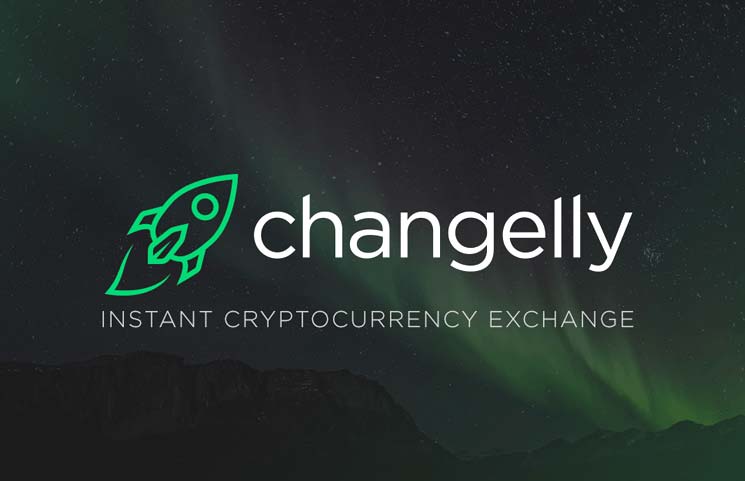
About Changelly Exchange
As far as trustworthy digital exchanges go, Changelly [changelly.com] is a reputable exchange that allows users to swap out different cryptocurrencies.
The company maintains hidden yet transparent protocols that offer the best crypto-to-crypto rates in any given moment that users seek to trade altcoins. Completely crypto-centric, users can however purchase altcoins to access the exchange with a fiat-backed card, although entrance fees are high via this option.
More typical transactions involve users trading their digital currencies from a personal wallet where existing holdings are kept. Whichever route is taken to trading on the exchange, the site presents as an elegantly simple trading platform that now has a loyal following.
As a leading crypto exchange, Changelly runs on competitive fees of only 0.5 percent and has many unique features. The platform sees a high volume of bitcoin trading, but many other altcoins are traded and Changelly even supports USD Tether (USDT).
As a logical upshot of the industry, the company shares some limelight with other now-entrenched platforms that got into the arena early, yet also got it right first time around. Circa April 2017, the exchange reached 1,000,000 users.
In a simple transaction that belies the skilled technical construct at play behind the scenes, a user can simply log into the site, enter a few details and effect a trade in under a minute.
Changelly In A Nutshell

Changelly trades on robotic intelligence that constantly feeds real-time data to the user interface. The exchange tracks all of the biggest cryptocurrency trading platforms, including Bittrex and Poloniex.
In a heartbeat, the Changelly bot samples bids and asks on platforms, and delivers the best possible trade price for any given currency pair. Although the quoted rate on a trade may be slightly different when a user actually transacts a few seconds later, the difference is typically negligible, due to the fast AI at play in the background and overall speed of the site.
The project is the product of several MinerGate enthusiasts’ proclivity for crypto trading. Changelly is a technically adept answer to the original development team’s desire to experience traditional fintech services in the cryptosphere. The site adds professionalism and credibility to the realm and also legitimizes altcoins, along with several thousand other exchanges and trading intel sites.
Users transact anonymously, and post regulation formation and also after the bitcoin bubble of December 2017, it would appear that Changelly built compliance, speed and a sleek overall UX into the project from the word go.
Accounts are protected with two-step authentication and there is no digital coin storage on the site. The security development team is proactive, and to date the site has managed to steer clear of trouble, being vigilant on reporting on user’s wallet breaches and other issues.
Enjoying some celebrity members too, the company lists some “500,000 satisfied users,” also noting that around 3 million people log into the site each month. Having made the best of digital currency’s volatility, bringing AI up to speed with the needs of traders to peg a moment’s exchange rate successfully, Changelly has established trading standards comparable to the legacy asset management sector. Users have replied with active employment of a sleek offer, many fiercely loyal to the platform.
Changelly’s Variable Rates And Transaction Speed

In spite of the intelligence behind the build and the fact that trading on the site is simple, logical and quick, transactions can still take up to an hour to be finally effected. This, coupled with the fact that digital currencies can fluctuate wildly in comparison to more traditional assets, has informed the exchange’s approach of not fixing exchange rates. Were the team to peg rates, risk costs would be factored into fees and make them far higher.
The company has found a sweet spot in charging a flat rate commission of 0.5 percent of the transaction value, something users value in the arena of asset volatility and momentary rises and falls.
New users especially are advised to note that altcoin exchanges incur blockchain or network fees too, apart from the exchange’s commission. The network costs are the commission fees that enable a particular blockchain.
Users are warned that they should ensure that the exchange’s fees and those of all networks involved in any trade are able to be met by sufficient funds in their wallet, failing which these smaller transactions will simply fail and result in funds being lost.
The team is at pains on the site to walk users through the trading process, noting that they should not rush through a transaction, but rather review information – especially wallet addresses – again and again, before enabling the trade.
With a responsive support team on hand, the outfit has clearly got the fundamentals aligned in a way that gives a great user experience to traders. Simplifying account setup and rolling proactively and transparently on user security issues, the exchange saves many traders downtime on research when they seek to glean the best current coins at the best current prices. Not taking user deposits has also kept the company free of the worst potential thefts that have dotted the arena over the last few years.
Changelly UX
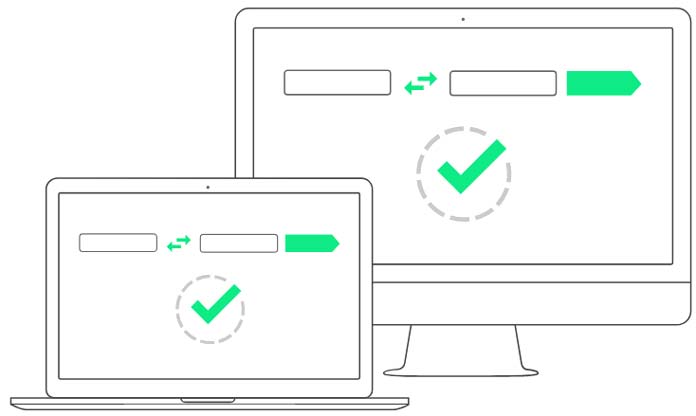
Users are warned against smaller transactions that might be lost to network fees. With larger transactions, there is no upper limit, although users are again forewarned to be patient, as different blockchains have different capacities.
The time taken for users to see the funds reflected in their wallets can vary, and since minor errors do occur at times, a user has the security of knowing that in the event of a technical error, the support team will push payments through on the back of a user’s transaction hash (the tx ID).
The most common issue confusing new users is the fact that final amounts often differ from what they saw at the time of executing the trade. Various blockchains with varying processing times (based on the network and the individual transaction volume) need to be accommodated in any transaction.
With constant ebbs and flows in digital coin values, even the short time taken to effect a trade can experience variations in price. This is the reason a lesser amount sometimes lands after a trade, although it can just as likely turn to the user’s favor too. The vast majority of trades on Changelly take between five and 30 minutes to be successfully processed.
Users sometimes have their wallet noted as “unrecognized.” This error message can appear if the relevant blockchain is overloaded, typically on the Bitcoin and other Bitcoin-based blockchains. Users simply need to wait for the network to get back up to speed under these circumstances. The exchange turns off some coins momentarily in order to update a client, yet transactions do continue post switch-off regardless.
DDoS attacks can hit anyone, although Changelly has a sophisticated set of preventative and responsive protocols at play to limit fallout. On the whole, user comments point to a seamless, untroubled experience on Changelly.
Changelly Conclusion
Users patronize Changelly because it’s been around for a while and represents one of the top-tier services of the industry. That said, the fact that the development team has gotten certain fundamentals right from the outset has meant that the exchange rose to the upper echelons of crypto-trading.
Without the need for major changes, UX has been consistent and consistently good, the reward for getting a project build right at the outset. With messaging and verification protocols on par with legacy banking practices, the company has successfully presented crypto trading in a recognizable, professional manner.
Offering a sleek, polished and intuitive experience to traders, Changelly has maintained its speed and professionalism in order to become an entrenched venue for millions of traders swapping out altcoins. Both the flat fee structure and a persistent developer dedication to enhancing users’ experience has grown the user base to the point where Changelly sits in the top tiers of a highly competitive market.
Click here to start trading with Changelly
Cryptocurrency Information
Bitcoin Volumes Finally Grow Again and Bitfinex/Tether Issues Spark Systemic Risks, New Diar Report Affirms
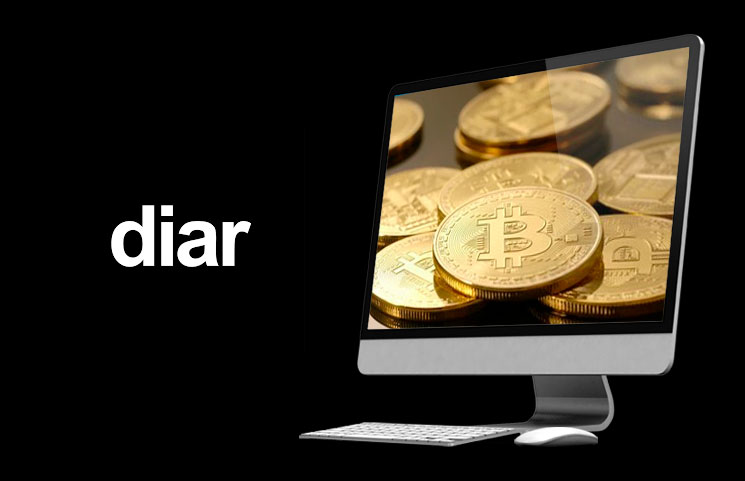
Diar has recently published its report of the crypto market for April. According to the company, Bitcoin volumes are finally growing again and the whole situation with Tether and Bitfinex showed the industry some of its systemic risks. DAI fee hikes and stablecoin projects were also highlighted in the report.
Bitcoin Goes Back To Growing Again
The main highlight of the month is, obviously, that Bitcoin is back on the action. After facing lows which started in 2018, the token has finally been able to effectively reverse the trends and have an actual price surge this month, going from less than $4,200 USD to over $5,200 USD during this short timeframe.
With this, the number of on-chain transactions has spiked for three months in a row, since prices started to get some of their value back in March and April. Now, transaction volumes are around their levels in June 2018 when the price of the asset was around $7,000 USD.
However, charts indicate that Bitcoin is yet to find more footing outside of speculative trading, so the bull market may not be as near as some think.
When looking at the volume of the whole quarters, Q1 2019 had lower volumes than Q4 2018, but Q2 2019 started considerably well.
Bitfinex and Tether Start Concerns of Systemic Risks
As you may have heard, Bitfinex was accused of using Tether funds to cover up its losses. According to Diar, there is a 26% shortfall of in-cash reserves to back Tether tokens (USDT). Tether loaned $850 million USD to Bitfinex to cover up losses and its general counsel Stuart Hoegner has affirmed that the company is operating with fewer reserves than the total market cap of the token.
This happened because Bitfinex had the $850 million USD “seized” by Crypto Capital, one of its payment processors. Unless Hoegner is lying, though, the company had the assets to back the stablecoin until recently.
While it is clear now that Tether simply does not have the money to back the funds, people simply keep buying the tokens. Now, instead of all cash, some shares of Bitfinex are being used to represent the rest of the value, which makes the stablecoin enter securities territory for the first time.
Curiously, the markets are all very tolerant now since the prices are still stable but the systemic risks are clear, especially if other companies are to follow Tether’s path.
DAI Hikes Fees Once More
Another situation highlighted by the reports is that DAI has decided to upgrade its stability fees once again as the community is desperately trying to make the prices of the so-called stablecoin go up again. DAI tokens are being sold for less than $1 USD, their official price, on secondary markets.
At the moment, the fees are 16.5%, after increasing three times in only one month. Before April, the fees were only 7.5%. This has resulted in a decrease of 4.9% in the circulation of DAI tokens.
Stablecoins Eye Wider Use Cases
Gemini and Harbor, a A16Z tokenized securities platform, have started a partnership in order to get more clients for the Harbor stablecoin. However, this was deemed “too soon” by Diar, as Harbor does not have any known token right now. The only one the company had was canceled.
TrustToken is also trying to get more stablecoins on its list, especially the ones that are not focused on USD, but on several other fiat currencies like HKD, CAD or GBP instead.
Cryptocurrency Information
#DropGold Campaign to Hit Your TV, Here’s A Breakdown of the Underlying Bitcoin Message(s)

Grayscale, a leader in digital currency investing, launched an ad on Wednesday, May 1, telling investors that money should be contributed to Bitcoin holdings as opposed to gold. In a number of interviews, CEO of Grayscale’s parent company (Digital Currency Group), Barry Silbert and Managing Director of Grayscale, Michael Sonnenshein, have since expressed the underlying message of the ad.
The #DropGold Ad
According to news outlet, U Today, the ad starts off with a man holding gold bars in his arm, which he decides to drop. While doing so, a woman also does the same. Throughout the ad, people supposedly have their gold bars stacked in shopping carts, while “losing their gold coins.” Watching what’s about to unfold, the two individuals try to find their way out.
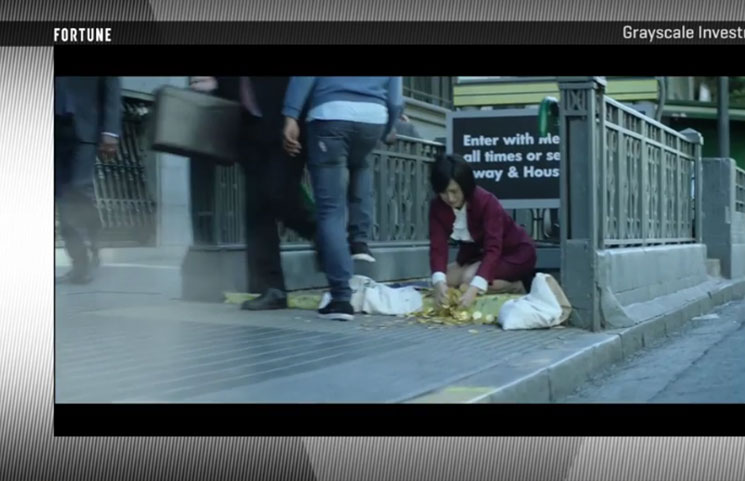
Advertising Bitcoin or Grayscale’s Services?
Despite being the one to have introduced this campaign, Silbert argues that it isn’t entirely about Grayscale services, but rather said services being a result of consumers’ decision. Yahoo Finance has since quoted the following comment made by Silbert himself:
“We do not see this as a Grayscale commercial. For us #DropGold is our ‘Got Milk’. This campaign is first and foremost focused on starting a conversation about bitcoin vs gold. If the ad makes people want to get into Bitcoin, we’re completely indifferent about how they go about doing it.”
Having said this, the commercial is evidently portraying Grayscale as an option, as towards the end, one is told, “Go Digital. Go Grayscale.”
Silbert’s and Sonnenshein’s Arguments Regarding Gold’s Limitations
Silbert believes that this campaign works towards addressing the fact that Bitcoin can serve as an equal asset class as gold, if not better. In particular, he was quoted saying, “But now you have Bitcoin, which, in our opinion, provides all the same attributes as gold – it’s fungible and scarce and you can’t counterfeit it – but the big difference is that Bitcoin has utility. Gold doesn’t have much utility beyond jewelry.”
He further argued that the goal here isn’t to replace fiat currency for shopping purposes, but rather to show the world that Bitcoin does a better job at doing gold’s job and this will be evident in the long run. Although he has acknowledged Bitcoin’s volatility as being concerning, he is hopeful that it will one day serve as both an ideal utility token and store of value.
As for Sonnenshein’s viewpoint, he sees this ad as revealing the “absurdity” associated with gold. More specifically, he said:
“We’re going after a narrative around gold being where investors should go when markets turn south or as a hedge against inflation […] we’re highlighting the absurdity of gold.”
As per The Block Crypto, Grayscale also tries to convince investors that the return earned from redistributing 5% of gold to Bitcoin will be greater than 5% yearly.
What are your overall thoughts on this ad? Did it leave you asking yourself, “Why did you invest in gold? Are you living in the past?” Share your thoughts below!
Cryptocurrency Information
Huobi Pro Bitcoin Exchange: Cryptocurrency Asset Trading Platform?

Huobi Pro Cryptocurrency Exchange
Founded in 2013, Huobi Pro allows for a myriad digital currencies to be exchanged, at a 0.2 percent trading commission. Loyal users point to the low fees and stellar service that make the exchange stand out above others.
Although pitched at dedicated cryptocurrency enthusiasts since the site doesn’t accept fiat currencies many who enter the realm on the back of fiat end up at Huobi Pro, largely due to its diverse offering and favorable fee structure.
Huobi Pro in A Nutshell

A victim of China’s clampdown on digital currencies, the company might be registered in the Seychelles, but was originally founded in Beijing. As testament to the broad appeal of the platform, after the Chinese regime effectively banned all things crypto at the beginning of 2018, trading volumes have only grown.
While at first very much a Chinese company looking at the home market, Huobi Pro has been forced to find a wider marketplace on the international scene. Indeed, even prior to the official cessation of altcoins and their trading, the company heard the rumblings in 2017 and took its cryptocurrency interests abroad.
Huobi now provides exchange services to users in over 130 countries. Company offices are located in the USA, Korea, Japan, Singapore and Hong Kong. Although the Huobi Group also owns and manages the Huobi Autonomous Digital Asset Exchange (HADAX), Huobi Pro is more of a pure “login and trade” exchange.
Users can employ network tokens to cast votes on adding new altcoins on HADAX. On the Huobi Pro exchange, a simplified offer encompassing all of the mainstream altcoins greets visitors. Some more popular coins offered are Bitcoin (BTC), Bitcoin Cash (BCH), Ethereum (ETH), Litecoin (LTC), NEM (XEM), NEO (NEO), Qtum (QTUM) and Ripple (XRP).
That said, when one actually tallies the number of altcoins available for exchange, it becomes apparent why loyal followers value the site. A marriage of both simple ease of use and diversity in trading, the platform is largely welcomed by newcomers and experienced enthusiasts alike. In the current melee of regulation being contemplated, implemented and tweaked all the while, some users may be precluded from trading on the exchange based on their country of residence.
Huobi Pro accepts the funding of accounts only in digital currencies, and accepts deposits in any of its listed altcoins. Unlike other exchanges that have opted for a midway between crypto and fiat, Huobi Pro traders deal strictly in digital coins at every point of a transaction. Funds need to be withdrawn to a wallet, and fiat users looking to buy in will have to establish a wallet first in order to fund their Huobi Pro trading account.
Traders pay a maker or taker fee of just 0.02 percent using the exchange. There are more detailed offers, worth looking at for daily traders with volume.
Huobi Pro Membership Levels
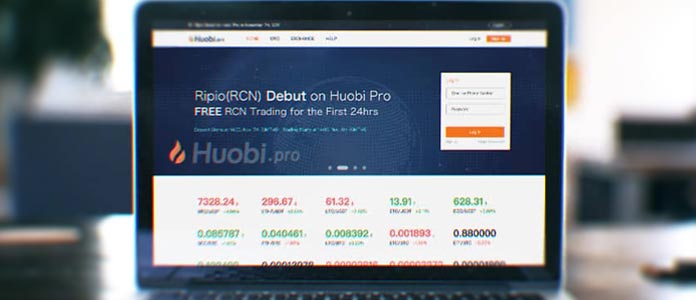
VIP users get preferential platform trading fees if they buy the privilege with Huobi tokens. The Huobi Token (HT) was never an ICO token, but rather a system token that users only obtain by buying “Point Cards” on the Huobi Pro platform. Point Card is essentially a pre-paid Huobi card that keeps users liquid on service fees. One HT = 1 USD, therefore one “point” = 1 USD. The more points purchased, the more free points are added, although savings on 1000 points, for example, means only 10 HT for free.
Huobi Global minted a fixed total of 500 million tokens, with 300 million employed to facilitate the in-house VIP structure. A mark of the business group behind the platform is seen in their practice of buying back-sold tokens from the open market each quarter. Not only that, but those funds go towards the Huobi Investor Protection Fund (HIPF).
This is a planned fund that will compensate investors who suffer platform disruption and subsequent losses. It’s a tool that minimizes risk, smooths out the market overall and also goes towards protecting investor interests. This transparent and pleasing aspect of the platform is one reason traders have confidence in the exchange, and its popularity is rising worldwide.
By way of example, in order to glean a VIP status, a trader will pay 120 HT a month for First Level membership. This enables a 20 percent discount on trading fees. Running through toward the top end, a pricier option of 6,000 HT a month secures a 50 percent discount on fees. Overall, a diligent trader can optimize the system and come out with a substantial discount on the already low 0.02 percent base offer.
The company charges no fees to deposit funds, but there are withdrawal fees. Although there are reviews online listing withdrawal fees, it appears that, especially within the membership structure, users are advised to ascertain exact fees when establishing their account. Likewise, transfer limits need to established upfront to avoid disappointment later. There exist order size limits on the platform too, again becoming more malleable as one moves up the ranks of the VIPs.
Security And UX On Huobi Pro

All of the standard protocols including two-step Google Authenticator verification are at play on the platform. Unlike many other exchanges that offer a simple crypto-exclusive platform, Huobi Pro will need your personal details in the form of a passport copy and chat room comments are not devoid of complaints, although almost all of them take issue with the structure of the platform and its potential pitfalls. There are few allegations of lost funds or other negligence on behalf of the company. On the whole, Huobi Pro seems to be rubbing off its decidedly corporate ethos onto the exchange – good news for traders overall.
Another serious boon for the cryptosphere as a whole is that over 98 percent of holdings are stored in an offline cold wallet or vault. Imbued with a strict customer service ethic, the platform probably sports the best customer service to date for crypto exchanges. Available 24/7 365, there is a live chat option onsite.
The platform intel is sufficient although newbies might have to scratch to paint a clear picture of how exactly everything works. The FAQs are thoughtful and, again, testament to a polished offering. Huobi used to be one of the biggest Chinese crypto exchanges, based in Beijing. Started by entrepreneur Leon Li in 2013, since the move there has been mutual appreciation of its value. Worldwide users have taken to the exchange, as it too realized that it had global appeal.
Huobi Pro Conclusion

Huobi claims to have exceeded BTC 500,000 in daily trading approaching 2014. Although only in its fifth year, that’s a long time in cryptocurrency. Although frequently accused of embellishing trading volumes, these allegations have never been proven. In comparison to other digital exchanges that have suffered persistent user complaints and even been shut down due to criminal activity, Huobi Pro shines.
As an offering, it has low fees, great diversity and an unbeatable crypto-energy. No trader on the platform feels like they’re missing out on something else somewhere else, by most accounts. Possibly due to their prior involvement in the fintech world, the platform got it right first time around and user numbers prove it. The company Huobi also owns another trading platform, BitYes, more focused on USD/BTC and USD/LTC pairs trading. Great customer service and minimal technical glitches have made it appear positively top-tier, again in comparison to less polished outfits.
With a detailed offering, great client liaison – very unusual for most digital exchanges so far – and no legitimate proof of anything even vaguely dark hanging about them, the Huobi Pro project is recommended. Users are advised to always ascertain costs prior to trading – not hard with the customer support in this case – and sample a platform with small trades before trading greater amounts. To learn more, you can head to their official website: huobi.pro











